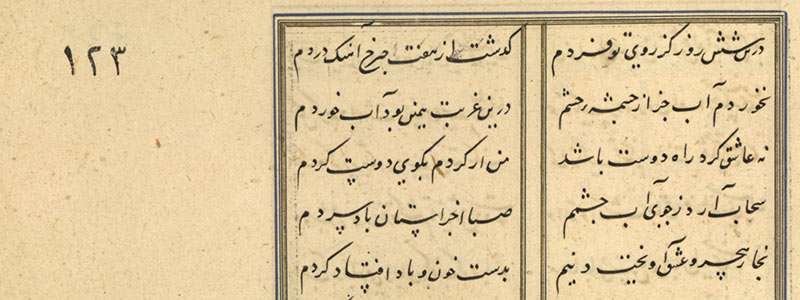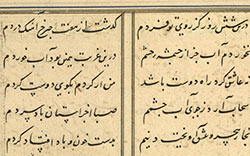Ja‘far Tabrizi, son of ‘Ali, was born in Tabriz in the second half of the fourteenth century. There is nothing known about his childhood or adolescence. He spent his youth in Tabriz, learning the fundamentals of calligraphy until around 1417 CE, when he left to write books in Yazd before travelling to Herat to enter the court of Bāysonghor b. Shāhrokh. During this time he learned the secret of Nasta‘liq under his teacher ‘Abd-Allāh, the son of Mir ‘Ali Tabrizi (the inventor of Nasta‘liq), while also learning from masters like Shams-al-Din Mashreqi and ‘Abd-al-Rahim Khalvati. After this, from about 1421 CE onward, Ja‘far’s writing is labelled with the title (nisba) Ja‘far al-Bāysonghori, due to his affiliation with the court in Herat.
Because of the great degree of mastery he possessed over his art, he became the head of the court library and in those years had the privilege of writing the Shāh-nāmah-ye Bāysonghori. In addition to mastering Nasta‘liq in six forms, Ja‘far also had considerable mastery over the Ta‘liq script and taught such students as ‘Abd-Allāh Heravi (known as Tabbākh, “the Cook”), ‘Abd al-Hayy Monshi, Shaykh Mahmud, and Azhar Tabrizi. Fortunately, many of his works survived to the present day, including valuable pieces written in Nasta‘liq such as Shāh-nāmah-ye Bāysonghori (which is kept in the library of the Golestan Palace in Tehran) and Divān-e Hasan-e Dehlavi (which is held in the Library of the Islamic Parliament of Iran). There is no official record of the date of his death, but from the year given on his last dated work it is generally estimated that he lived until 1455 CE.




